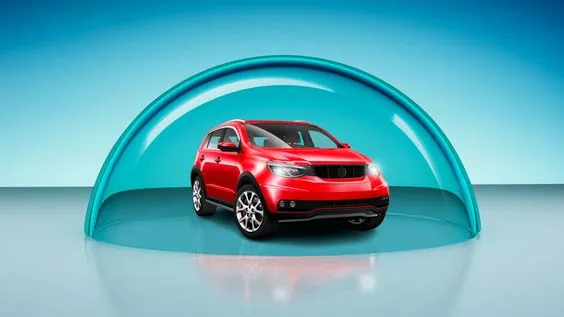When you’re in the market for a new or used car, one of the most important factors to consider is the Annual Percentage Rate (APR) on your auto loan. But what exactly is a good APR for a car? Let’s dive into this topic and help you understand what to look for when shopping for your next vehicle.

What Is an APR?
- Definition: The APR includes not only the base interest rate but also additional fees associated with servicing the loan, such as documentation fees, taxes, and dealer prep charges.
- Why It Matters: A lower APR means less money out of your pocket over the life of the loan.
Factors That Influence Your Car Loan APR:
- Credit Score:
- Excellent Credit (780–850): Enjoy an average new vehicle loan rate of around 2.47%.
- Lowest-Range Credit Scores (300–500): Face average rates of about 12.53%.
- Aim for 5% APR if you have excellent credit, 6–7% for good credit, 11–12% for fair credit, and 16–17% for bad credit.
- Down Payment:
- A larger down payment reduces the loan amount, leading to a more favorable APR.
- Type of Vehicle:
- New vehicles generally have lower interest rates than used ones.
- Reliable brands (like Toyota or Honda) can result in a lower APR due to better resale value.
- Personal Stability:
- Proof of stable employment and a longer address history can improve your APR.
Average Auto Loan Interest Rates (As of Q1 2024):
- New Cars: 6.73% overall average APR
- Used Cars: 11.91% overall average APR
Remember, anything over 10% APR is considered high. So aim for the lowest rate possible to save money on your car purchase! 🌟
So, What is a Good APR for a Car?
The definition of a “good” APR can vary depending on your specific circumstances. However, here’s a general guideline:
- Excellent (800+): 2-4%
- Very Good (740-799): 3-5%
- Good (670-739): 4-6%
- Fair (580-669): 6-12%
- Poor (300-579): 12-20%
Keep in mind that these ranges can fluctuate based on market conditions and other factors mentioned earlier.
A good APR for a car can vary based on several factors, including your credit score, the length of the loan term, the type of vehicle, and the lender. Here’s a general idea of what you might expect:
| Credit Score Range | Average APR for New Cars | Average APR for Used Cars |
|---|---|---|
| 781 – 850 (Excellent) | 3.24% | 4.08% |
| 661 – 780 (Good) | 4.21% | 5.58% |
| 601 – 660 (Fair) | 7.14% | 9.23% |
| 501 – 600 (Poor) | 11.33% | 15.47% |
| 300 – 500 (Very Poor) | 14.59% | 20.58% |
These rates are averages and can fluctuate based on market conditions and individual circumstances.
Also See: Can I Finance a Car for My Daughter?
How to Get the Best APR
- Check and Improve Your Credit Score: Before applying for a car loan, check your credit report and work on improving your score if necessary.
- Shop Around: Don’t settle for the first offer you receive. Compare rates from multiple lenders, including banks, credit unions, and online lenders.
- Consider Loan Term Carefully: While longer terms might seem attractive due to lower monthly payments, they often come with higher APRs.
- Negotiate: Don’t be afraid to negotiate with lenders. Sometimes, they may be willing to offer a better rate to win your business.
- Consider a Larger Down Payment: A substantial down payment can sometimes help you secure a lower APR.
- Get Pre-approved: Obtaining pre-approval for a car loan can give you leverage when negotiating with dealers.
The Impact of APR on Your Car Loan
To illustrate how APR affects your car loan, let’s look at an example:
Suppose you’re buying a $25,000 car with a 60-month loan term:
- With a 3% APR, your monthly payment would be about $449, and you’d pay $1,953 in total interest.
- With a 6% APR, your monthly payment would increase to $483, and you’d pay $3,968 in total interest.
- With a 12% APR, your monthly payment jumps to $556, and you’d pay $8,365 in total interest.
As you can see, even a few percentage points can make a significant difference in your total cost over the life of the loan.
New vs. Used Car APRs
It’s worth noting that APRs for new cars are typically lower than those for used cars. This is because new cars are seen as less risky investments for lenders. However, don’t let this discourage you from buying a used car if that’s what fits your budget. A well-negotiated APR on a used car can still result in a good deal overall.
Special Financing Offers
Keep an eye out for special financing offers, especially on new cars. Manufacturers sometimes offer promotional APRs as low as 0% for qualified buyers. While these deals can be fantastic, make sure to read the fine print and understand any limitations or requirements.
The Importance of Reading the Fine Print
When evaluating APRs, always read the loan agreement carefully. Look out for:
- Prepayment penalties
- Hidden fees
- Variable vs. fixed rates
- Balloon payments
Understanding these details can help you avoid surprises down the road and ensure you’re getting the best deal possible.

Why APR Matters
The APR on your car loan affects your monthly payments and the total amount you’ll pay over the life of the loan. A lower APR means lower monthly payments and less paid in interest overall.
Example Calculation
Let’s say you borrow $20,000 for a car with a 5-year (60-month) loan term. Here’s a comparison of different APRs:
| APR | Monthly Payment | Total Interest Paid | Total Cost |
|---|---|---|---|
| 3% | $359.37 | $1,562.40 | $21,562.40 |
| 5% | $377.42 | $2,645.20 | $22,645.20 |
| 7% | $396.02 | $3,761.20 | $23,761.20 |
| 9% | $415.17 | $4,909.20 | $24,909.20 |
As you can see, even a small difference in APR can result in significant savings.
Tips for Securing a Good APR
- Improve Your Credit Score: Pay bills on time, reduce debt, and correct any errors on your credit report.
- Shop Around: Compare offers from different lenders, including banks, credit unions, and online lenders.
- Consider a Co-Signer: If your credit score is low, a co-signer with a higher score can help secure a better APR.
- Negotiate: Don’t be afraid to negotiate the APR with the lender.
- Make a Larger Down Payment: Reducing the loan amount can help lower the APR.
FAQs
What is the difference between APR and interest rate?
The interest rate is the cost of borrowing the principal loan amount, while APR includes the interest rate plus other fees and costs associated with the loan.
How can I find out what APR I qualify for?
You can get pre-approved by lenders, which will give you an idea of the APR you qualify for based on your credit score and financial situation.
Does a lower APR always mean a better deal?
Not necessarily. It’s important to consider the total cost of the loan, including any fees and the loan term. Sometimes, a lower APR may come with higher fees or a longer loan term that increases the total cost.
Can I refinance my car loan to get a better APR?
Yes, if your credit score has improved or market rates have dropped, refinancing can help you secure a lower APR.
Is it better to get a car loan from a dealer or a bank?
It depends. Dealers sometimes offer promotional rates that can be very competitive, but banks and credit unions may offer better terms. It’s best to compare offers from multiple sources.
What is a good APR for a car loan if I have bad credit?
If you have bad credit, a good APR is below the average for your credit score range. Improving your credit score can help you qualify for better rates in the future.
Conclusion
A good APR for a car loan depends on various factors, including your credit score, the type of car you’re buying, and current market conditions. While it’s great to aim for the lowest APR possible, remember that the overall cost of the car and your ability to comfortably make payments are equally important considerations.
Understanding what a good APR for a car is can help you make informed decisions and save money over the life of your loan. By considering factors like your credit score, loan term, and type of vehicle, and by shopping around for the best rates, you can secure a favorable APR for your car loan. Always remember to read the fine print and consider the total cost of the loan, not just the APR.

Alisha Ray is the founder and chief editor of MoneyCocktail.com, a leading resource for finance, insurance, and share market insights. With a passion for empowering individuals to make informed financial decisions, Alisha combines her extensive knowledge and practical experience to provide clear, actionable advice.

